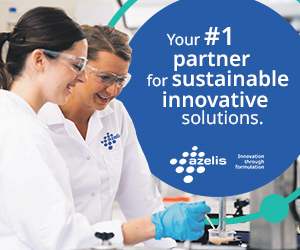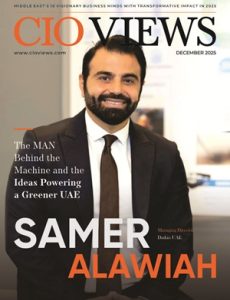Emily Milsovic, CEO of Armonica Technologies, Inc., stands at the forefront of genomic innovation with a vision that extends beyond the conventional boundaries of biotechnology. Under her leadership, Armonica is set to revolutionize the genomics field by detecting critical missing genomic data that other technologies cannot see. In addition, Armonica’s technology doesn’t require the lengthy and costly upfront processes other methods require.
This pioneering technology aims to identify one’s epigenetics, or genome modifications linked to almost every disease. She mentioned that many modifications to one’s genome are unable to be read today. Epigenetic modifications, or DNA modifications that turn genes “on” or “off,” are closely related to how genes function, how disease develops and progresses, and even aging and longevity. Multiple environmental determinants, including pollutants, dietary habits, and lifestyle choices, can potentially alter epigenetic profiles. She refers to the genome, or DNA, as the source code for all living things. “There is a significant market need for a more comprehensive genome reading approach. Armonica’s technology simplifies this process and provides the missing data links needed for better therapeutics, diagnostics, and drugs.”
Emily’s transition to Armonica is a testament to her extensive background in life sciences and diagnostics, honed at leading companies like Illumina and Danaher. “What attracted me to Armonica was what our technology could mean for patients since we’re detecting what others cannot see,” she says. “Can you imagine a world where we eradicate cancer, Alzheimer’s, heart disease, and diabetes, just to name a few?” Cancer is a disease of the genome. Illumina was certainly the first commercial company to associate epigenetic data with cancer, and an entire ecosystem of diagnostics and therapeutic companies emerged based on just a few genomic data patterns. There are over 150 genomic modifications more we believe aren’t being detected through technology on the market today; that is where Armonica comes in,” Emily explains.
Today, reading DNA and its modifications remains tedious, costly, and has a high error rate. “While the cost of sequencing has decreased, it is still prohibitively high, and we can’t even see 90% of the data needed.” Armonica’s method is rooted in physics and optics rather than traditional chemistry, which means we can retain data that is often lost. “It’s a truly disruptive technology that’s profoundly sensitive,” she adds.
Emily envisions a future where Armonica builds a sustainable business model focused on profitability, particularly in an industry where overspending and inflated valuations have deterred investors. “We’re being very purposeful about Armonica—well-run, capital efficient, not a high burn rate, and focused on key applications with high unmet needs and a clear clinical problem needing to be solved,” she concludes.
Competition as a Catalyst for Innovation
Emily views the highly competitive medical technology arena not as a hurdle but as a catalyst for innovation. We view it as an opportunity to innovate,” she asserts. Amidst the dominance of a few established players in the expansive genomics market, Emily and her team at Armonica see an opportunity to establish a unique niche.
“Our technology is a complementary technology that’s an entirely new category within the genomics sequencing market,” she explains. We’ve received customer feedback, and there is significant interest in having our analyzer sit next to an established genomics player’s sequencer. Down the road, of course, our technology could replace existing sequencing technology, and certainly there are many diagnostic and therapeutic applications. We are also thinking about monetizing our data, building our own assays, and even using this technology for proteomics.”
“Competition keeps us on our toes,” Emily adds, “but it’s also helped us get clear on our short-term and long-term strategy.” This clarity and focus drive Armonica’s innovation, positioning the company to make significant strides in the genomics industry.
Advancements in Genomics and Strategic Leadership
Emily reflects on her 25-year career journey, noting the evolution from the $3 billion Human Genome Project to today’s $200 genome sequencing. Despite reduced costs, the volume of data falls short, and she foresees the next decade as crucial for companies like Armonica to integrate genomic data into personalized medicine.
At Armonica Technologies, Emily has overseen significant advancements. “We’ve set an ambitious goal,” she says, focusing on delivering their first product within two years.
With a strategy to build a durable business model and potentially evolve into diagnostics, she remains confident in Armonica’s future, navigating a challenging market with a lean operation. “Most companies in our space take years to profitability, and our technology is much cheaper to bring to market with incredible innovation,” she concludes.
Navigating the Disruptive Landscape of Biotech and MedTech Industries
Emily views the biotech and MedTech industries as fundamentally disruptive but acknowledges the challenges of translating rapid technological advances into medical practice. “Genomics may move fast, but medicine does not,” she notes.
The COVID-19 pandemic has significantly accelerated the industry. “COVID was the first time we saw genomic technology, through the mRNA vaccine, applied to a healthy population,” Emily explains. This marked a pivotal shift, as genomic technologies are usually reserved for treating illnesses rather than preventive measures. “The highest bar of medicine is when you take a treatment and give it to a healthy population,” she underscores, highlighting the groundbreaking nature of this development.
Emily emphasizes the need to balance innovation with practical application in biotech, illustrating both the industry’s potential and the patience required to fully realize its benefits.
Defining Leadership Success Through Challenges and Problem Solving
Emily reflects on her definition of success and the path that has shaped her leadership. With success at large life sciences, diagnostics, and technology companies, she emphasizes the crucial role of problem-solving in her career.
“From the time I was a child up through now, I’ve always viewed problems as opportunities,” Emily explains. Her approach to leadership involves seeing challenges as chances to innovate and improve.
Emily credits her success to her willingness to tackle difficult assignments. “I choose really difficult assignments such as complex business turnarounds and launching disruptive products into very competitive established markets,” she notes. Her readiness to embrace complex projects has helped her develop skills essential for leading effectively.
Embracing Challenges as a Pathway to Leadership Growth
Emily’s entire career has been marked by a relentless pursuit of challenging opportunities. My interest in STEM started early. “I was extremely fortunate to have supportive parents who opened my eyes to education, a career in STEM, and working hard—all credit goes to them.” From managing a double major in chemistry and economics at Wellesley College to obtaining her MBA in Finance and Healthcare Management at the Wharton School, she has always embraced difficult tasks. “I always just raise my hand for the tough and the hard assignments,” she says.
This mindset has shaped her leadership style, which is characterized by a willingness to confront obstacles head-on. “A special kind of leader embraces these challenges and sees them as opportunities,” Emily notes. Her approach not only defines her leadership but also inspires her team. “When your team sees you tackling the hard problems, it helps them realize that they can do that too,” she adds.
Fusing Science and Business: A Passion for Biotech and Leadership
Emily has long been captivated by the intersection of science and technology. Her career has consistently centered on the biotech and healthcare industries, driven by a fascination with turning scientific and engineering innovations into successful businesses.
Emily thrives in roles that allow her to engage with various disciplines. Her passion lies in taking groundbreaking ideas and guiding them to market success. For her, the appeal of these fields is not just in their scientific aspects but also in their business potential.
“I love science, but I also love finance, I love marketing, I love product development, and I love technology,” she explains. The role of a CEO offers her the opportunity to interact with all these areas, fulfilling her diverse interests and expertise.
Driving Innovation and Strategy in Biotech
“My chief responsibility right now is to drive innovation and the direction of the company,” she explains. Her goal is to transform groundbreaking technology into a sustainable business, aiming to disrupt the typical biotech cycle where companies either run out of funds or shut down.
Fundraising is a crucial part of her role, especially given Armonica’s origins and stealth mode. “We are not the typical biotech company. We’re more attuned to a semiconductor company; we iterate on designs quickly,” Emily notes. Her task involves legitimizing the technology and generating investor enthusiasm for its potential.
Emily’s role spans every facet of the business, from people operations to overall business strategy. Yet, her primary focus is on building a robust platform. “I’m here to take a great technology and make it a business,” she emphasizes, highlighting her commitment to both innovation and strategic growth.
Armonica’s culture of discovery and continuous improvement
Emily defines Armonica’s culture through two core principles. First, she emphasizes a “childlike curiosity about technology.” She describes the team’s daily approach as embodying “wonder and amazement,” akin to how a child reacts to new discoveries. This sense of wonder is a fundamental aspect of Armonica’s culture, driving a relentless passion for innovation.
Second, we have a strong commitment to continuous improvement. “Every day we improve, and we help each other improve.” She highlights that there is no shame in not knowing something and that “no idea is silly,” underscoring a culture where ongoing learning and mutual support are paramount.
Disruption drives our innovation
Emily and her team are motivated by their pursuit of a groundbreaking technology that promises to fundamentally improve the lives of patients. She describes their mission as “devilishly hard to do,” yet essential for disrupting the current technological landscape and finally realizing the potential of genomics.
Down the road, many of us believe that your genome will be sequenced at birth, and this will become a vital part of your health record.
Strategic Roadmap Focuses on Product Launch and Sustainable Growth
Emily outlines the company’s roadmap with a focus on innovation and stability. The primary goal is to launch the first-ever epigenetics sequencer within the next two years. This platform will cater specifically to customers interested in epigenetic modifications. The technology promises to offer a highly accurate analyzer with proprietary chips, kits, services, and software central to the company’s unique approach.
In addition to the product launch, Emily is spearheading a new funding round to ensure the company is positioned for commercial success. The aim is to build a durable business with early revenue opportunities from partnerships and services. Amidst a challenging investment climate for genomics and tools companies, Emily emphasizes the importance of effective business management to navigate the current market dynamics.
Championing Diversity and Overcoming Challenges
Emily emphasizes the need for greater diversity in genomics, highlighting that current data and therapeutics are predominantly based on Caucasian samples, neglecting the rich diversity of the global population. “The power of genomics is still limited to first-world nations, and we need to ensure we can bring genomics to the masses.” She asserts that by developing sequencing technology that is more inclusive and cost-effective, her company aims to enhance data representation.
Emily also underscores the importance of diversity, equity, and inclusion (DEI), noting that while her company is small, DEI remains a core priority, influencing their approach to creating impactful therapeutics. As a strong advocate for women in STEM, Emily actively supports initiatives like the National Women’s Hall of Fame and the philanthropic education organization (PEO), focusing on encouraging young girls to pursue science and technology careers.
When asked to define herself in one word, Emily chooses “tenacious.” She describes her persistence and dedication to overcoming challenges, even when tasks are difficult. Her approach to leadership is characterized by a readiness to tackle tough problems and a commitment to continuous improvement.
Conclusion
As Armonica Technologies, Inc. navigates the complexities of the genomics landscape, Emily Milsovic’s tenacity and forward-thinking leadership ensure the company’s ascent in a competitive market. Her commitment to diversity, equity, and innovation reflects a broader vision of redefining the field’s potential.
By focusing on inclusive technology and fostering a culture of continuous improvement, Emily is not only advancing Armonica’s mission but also setting a precedent for future developments in genomic science. Her leadership exemplifies a blend of strategic acumen and passionate advocacy, driving significant progress in the quest for comprehensive and representative genomic solutions.





